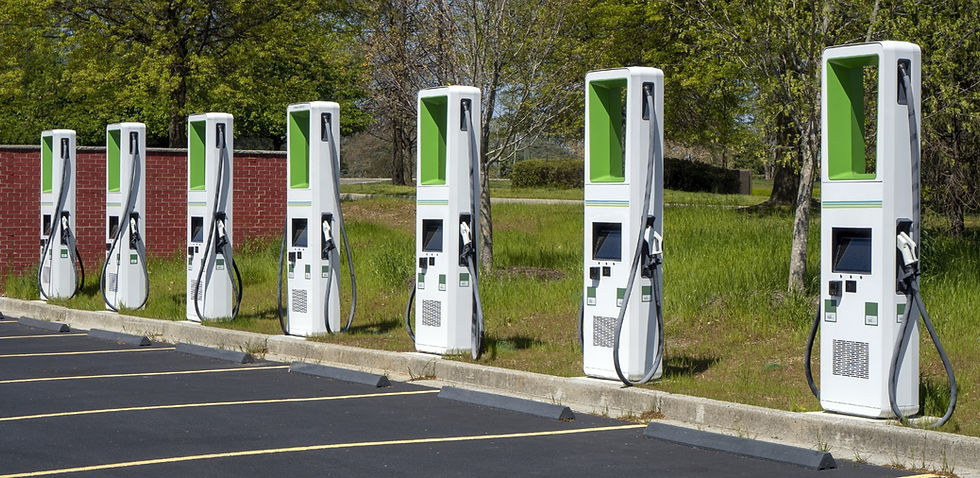Evaluating the Greenness of Electric Vehicles: Debunking the Coal Plant Connection
- Ashwin Dev

- May 24, 2023
- 3 min read
"An EV is only as green as the source of electricity."
As the world strives to reduce carbon emissions and combat climate change, electric vehicles (EVs) have emerged as a promising solution. However, sceptics often raise concerns about the environmental impact of EVs, pointing out that the electricity powering them is often sourced from coal plants. This contentious debate raises questions about whether EVs are truly green or if their eco-friendly image is overshadowed by coal-based electricity generation. Let us look at this issue in more detail.

Most people think EVs produce zero carbon emissions because they don't burn petrol like their Internal Combustion Engine (ICE) counterparts. However, this is not true, as the electricity that you use to charge the EVs at the charging stations or homes is produced at a power plant unless you have a local renewable energy generator (like a solar panel or windmill). The amount of CO₂ that is produced by the EV depends on the amount of CO₂ that is produced by the power plant that generates electricity in the first place. Let us delve into the calculations and see how green EVs actually are.
Calculations
Electric Vehicle
Coal-based power plants generate the most amount of CO₂ per kWh of electricity produced. Therefore, let us look at the worst-case scenario, where most of the energy comes from coal plants. For this, we can take the case of India, which has almost 75% of its energy coming from coal. You can read more about the sources of India's energy generation here. I'm taking Tata Nexon EV as my example, as it is India's most popular EV car.
The range of the car is 208 km (realistically) on a full charge. The battery pack size is 30.2 kWh. Therefore, we require 30.2/208 = 0.145 kWh/km energy for running one km.
Charging losses associated with an EV is about 15%. Therefore, 0.145/(1-0.15) = 0.171 kWh/km energy is required realistically.
The energy that comes to the plug point also suffers transmission and distribution losses, which is almost 30% in India. Therefore, the energy that is made by the power plant should be 0.171/(1-0.3) = 0.244 kWh/km.
Now, a typical coal plant generates about 1.025 kg CO₂/kWh of energy produced. Therefore, for running the EV for one km, the coal plant produces about 0.244*1025 = 250g of CO₂.
In India, 75% of energy comes from coal plants. The rest comes from other sources, most of which are renewable. Therefore, let us multiply this 250g by a factor of 0.8 to take this effect into consideration. Therefore, a Tata Nexon EV will produce around 250*0.8 = 200g of CO₂.
IC Engine Vehicle
Burning petrol/gasoline is the major source of pollution in IC engine cars. Let us look at the amount of CO₂ that is generated by a typical Tata Nexon Petrol car.
Burning one litre of petrol releases about 2340g of CO₂. Mining and refining petrol has an associated 720g of CO₂ per litre. Therefore, in total, this amount to 3060g of CO₂ per litre of petrol.
A petrol Tata Nexon gets around 15 kmpl of mileage on average. Therefore, the amount of CO₂ released per km is given by 3060/15 = 204g of CO₂.

Verdict
A petrol car produces 204g of CO₂ per km, and an EV produces 200g of CO₂ per km. The difference is strangely small. But this is due to the fact that most of the power comes from coal-based power plants. Taking into consideration CO₂ intensive battery manufacturing process for EVs would leave EVs at a disadvantage in this scenario. The CO₂ emissions are directly linked to the source of electricity. For example, when only 25% of electricity comes from coal and the rest comes from renewable sources, the amount of CO₂ generated reduces drastically to 75g per km. EVs become greener as the source of electricity becomes greener.
In addition to this, EVs eliminate tailpipe pollution and make cities and living spaces cleaner. The only pollution would be at power plants which are located far away from urban areas. Furthermore, the need for pollution control would be limited to localized power plants and not billions of vehicles on the road. Hence, EVs have a small advantage now, and their true environmental benefits are more pronounced when considering the broader context and potential for a greener energy future.





Comments